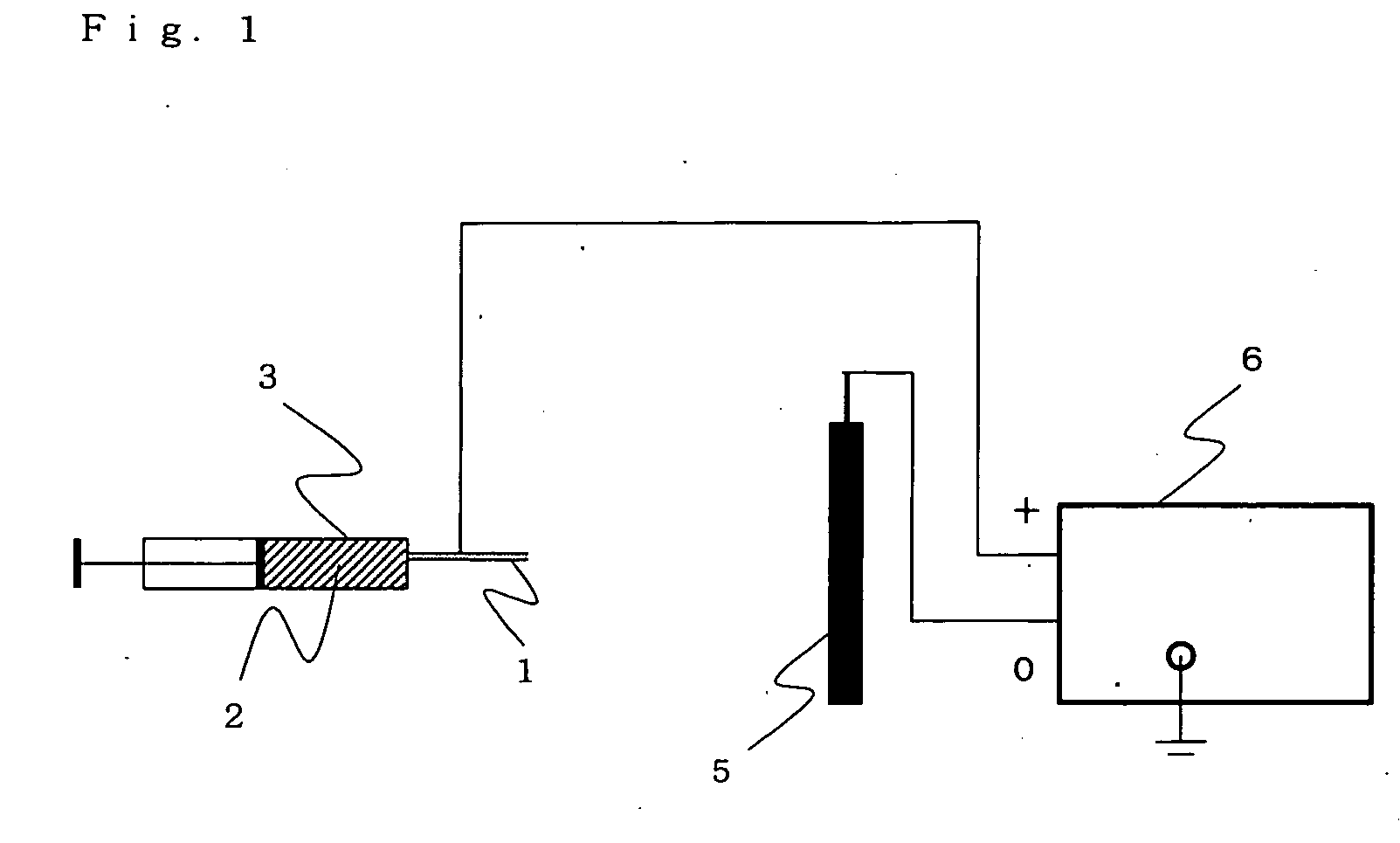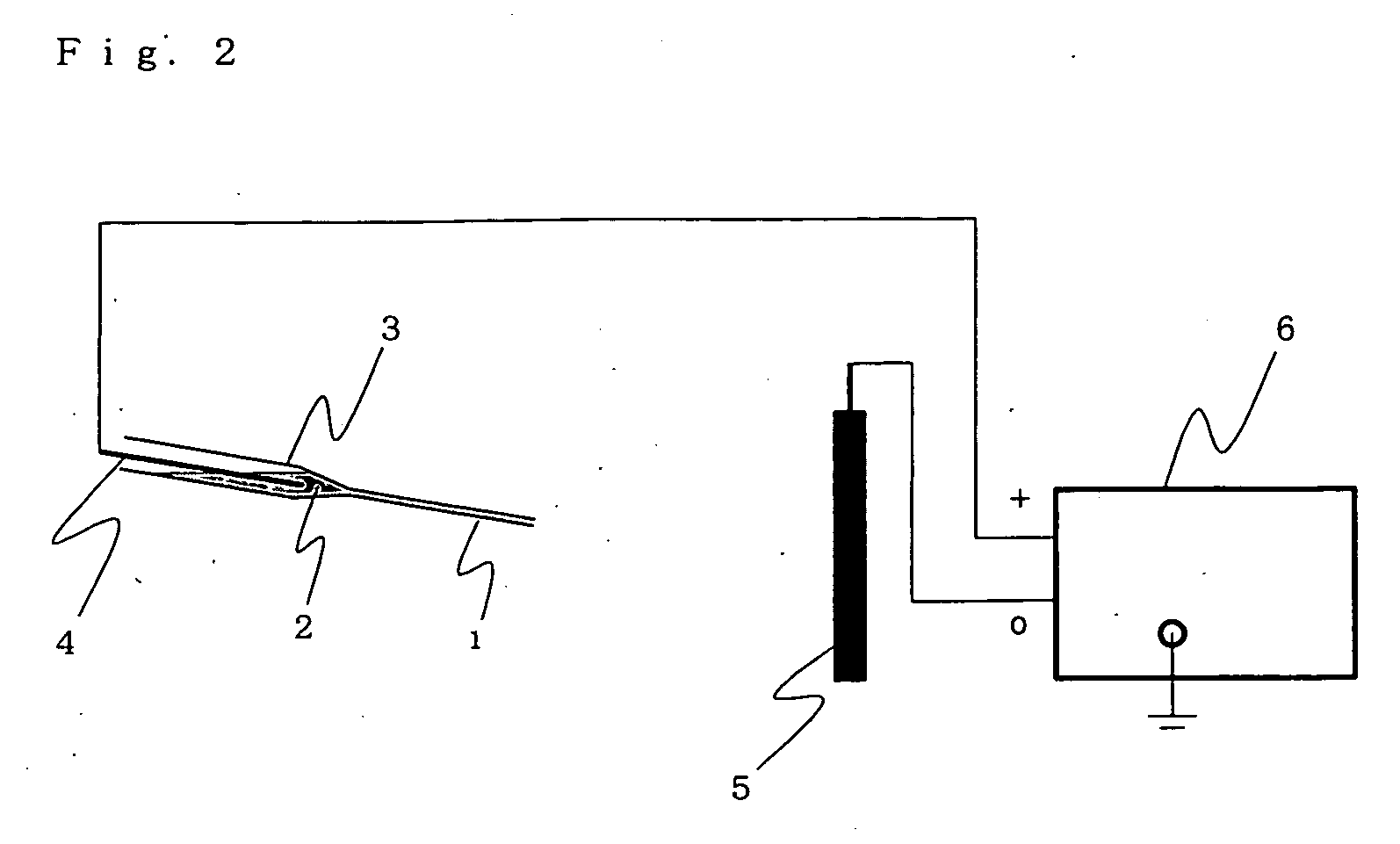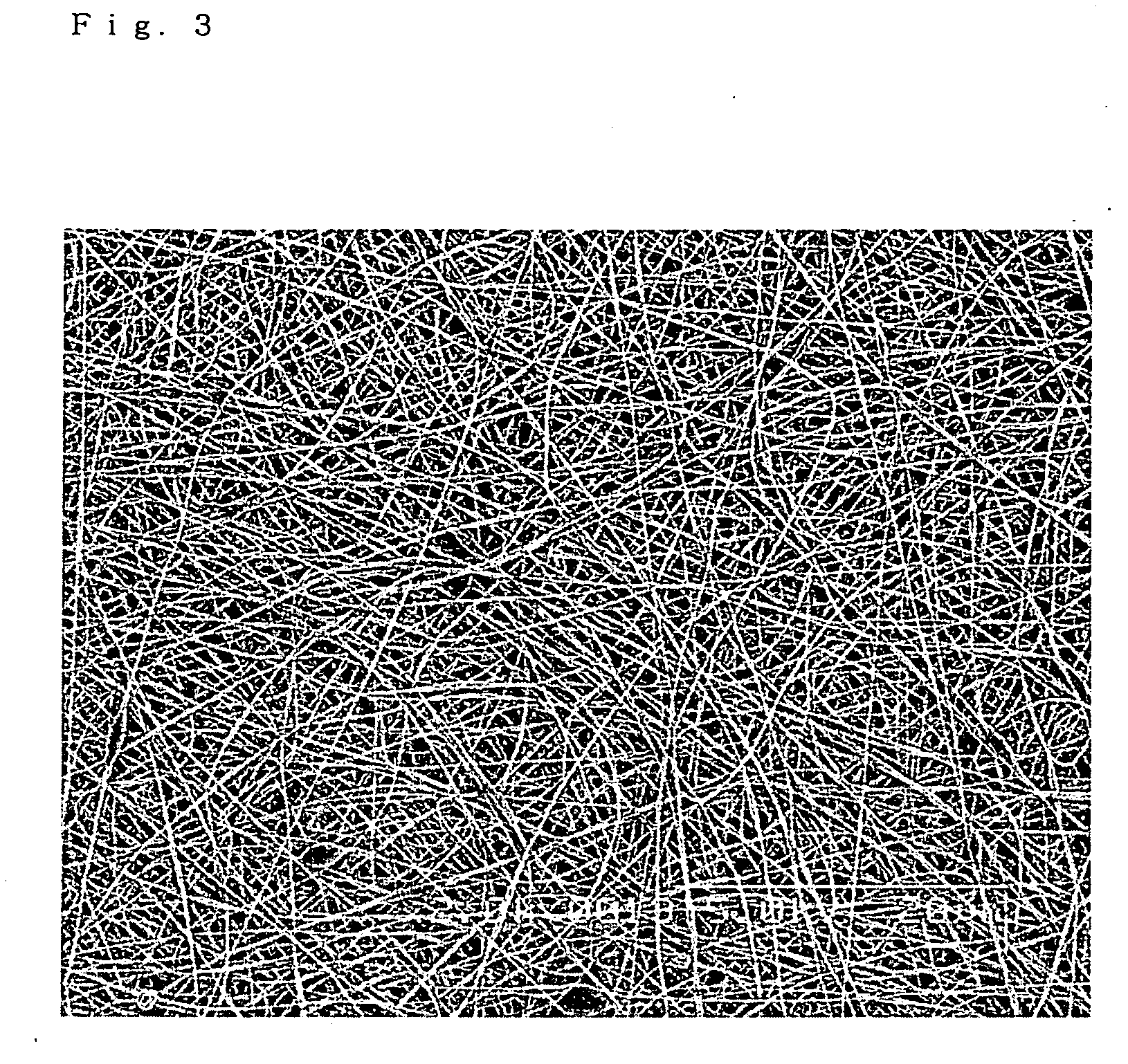Catalyst-supporting fiber structure and method for producing same
a technology of supporting fiber and catalyst, which is applied in the direction of catalyst activation/preparation, organic compound/hydride/coordination complex catalyst, physical/chemical process catalyst, etc., can solve the problems of poor treatment efficiency, small amount of catalyst to be used, and complex operations, etc., to achieve the effect of reducing the number of harmful chemicals, simple method, and flexible catalyst support performan
- Summary
- Abstract
- Description
- Claims
- Application Information
AI Technical Summary
Benefits of technology
Problems solved by technology
Method used
Image
Examples
example 1
[0097] A solution consisting of 1 part by weight of polyacrylonitrile (manufactured by Wako Pure Chemical Industries, Ltd.) and 9 parts by weight of N,N-dimethylformamide (a reagent special grade, manufactured by Wako Pure Chemical Industries, Ltd.) was prepared. By using a device as shown in FIG. 2, the subject solution was discharged into a fibrous substance collecting electrode (5 in FIG. 2) for 30 minutes. An inner diameter of an injection nozzle (1 in FIG. 2) was 0.8 mm, a voltage was 12 kv, and a distance from the injection nozzle (1 in FIG. 2) to the fibrous substance collecting electrode (5 in FIG. 2) was 10 cm. The resulting fiber structure had a basis weight of 3 g / m2. The resulting fiber structure was observed by a scanning electron microscope (S-2400, manufactured by Hitachi, Ltd.) and found to have an average fiber diameter of 0.2 μm. A fiber having a fiber length of not more than 20 μm was not observed. Scanning electron microscope photographs of the resulting fiber st...
example 2
[0099] The same operations as in Example 1 were followed, except that after forming a fiber structure, the fiber structure was thermally treated at 300° C. for 3 hours.
[0100] The fiber structure as obtained after the thermal treatment was observed by a scanning electron microscope (S-2400, manufactured by Hitachi, Ltd.) and found to have an average fiber diameter of 0.2 μm. A fiber having a fiber length of not more than 20 μm was not observed. Scanning electron microscope photographs of the resulting fiber structure are shown in FIG. 6 and FIG. 7.
[0101] The resulting fiber structure was subjected to the same operations as in Example 1 to obtain a catalyst-supporting fiber structure. The ultimately obtained results of catalytic activity evaluation are shown in Table 1.
example 3
[0105] A solution consisting of 1 part by weight of poly(vinyl chloride) having a degree of polymerization of 1,300, 4.5 parts by weight of N,N-dimethylformamide (a special grade, manufactured by Wako Pure Chemical Industries, Ltd.), and 4.5 parts by weight of tetrahydrofuran (a special grade, manufactured by Wako Pure Chemical Industries, Ltd.) was prepared. Subsequently, by using a device as shown in FIG. 1, the subject solution was discharged into a fibrous substance collecting electrode (5 in FIG. 1) for 60 minutes. An inner diameter of an injection nozzle (1 in FIG. 1) was 0.8 mm, a solution feed rate was 20 μL / min, a voltage was 12 kV, and a distance from the injection nozzle (1 in FIG. 1) to the fibrous substance collecting electrode (5 in FIG. 1) was 20 cm. The resulting fiber structure was a non-woven fabric having a basis weight of 36 g / m2 and a thickness of 0.2 mm. The resulting fiber structure was observed by a scanning electron microscope (S-2400, manufactured by Hitach...
PUM
| Property | Measurement | Unit |
|---|---|---|
| Diameter | aaaaa | aaaaa |
| Diameter | aaaaa | aaaaa |
| Particle size | aaaaa | aaaaa |
Abstract
Description
Claims
Application Information
 Login to View More
Login to View More - R&D
- Intellectual Property
- Life Sciences
- Materials
- Tech Scout
- Unparalleled Data Quality
- Higher Quality Content
- 60% Fewer Hallucinations
Browse by: Latest US Patents, China's latest patents, Technical Efficacy Thesaurus, Application Domain, Technology Topic, Popular Technical Reports.
© 2025 PatSnap. All rights reserved.Legal|Privacy policy|Modern Slavery Act Transparency Statement|Sitemap|About US| Contact US: help@patsnap.com



